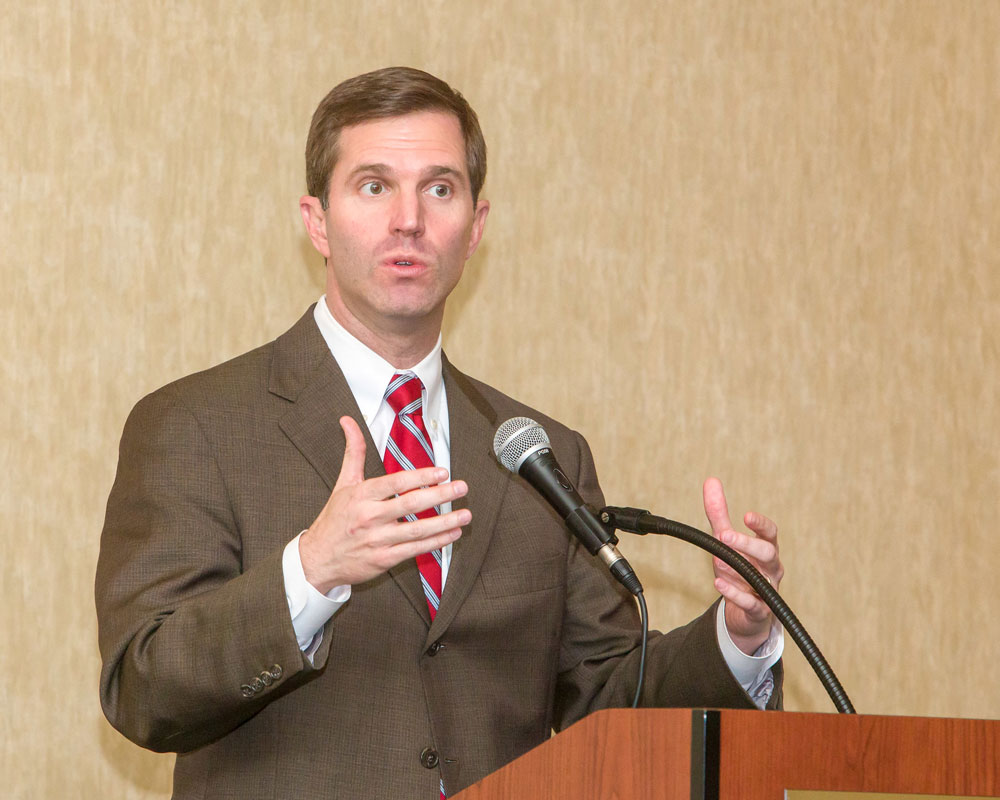
June 28, 2020; Lexington Herald-Leader, New York Times, and the Washington Post
With Kentucky voting last Tuesday, 46 states and the District of Columbia have now gotten through this year’s primary election season. Their experiences, good and bad, show us what is at stake this November.
After several states, including Wisconsin and Georgia, showed us how not to organize an election, Kentucky’s approach gives us hope. Replicating it, though, will take a lot of work and a spirit of togetherness.
Recognizing that the threat of COVID-19 meant asking most voters to show up to vote in-person on Election Day was no longer safe or wise, a Democratic governor and a Republican secretary of state prioritized the need for a fair election over political agendas. They agreed to replace and revise Republican-supported election rules, as described by the Lexington Herald-Leader, with ones “allowing for the first time no-excuse absentee ballots, early voting, and fewer polling places. It gave voters a taste of freedom, of what other states do to encourage voting, rather than discourage it.”
The changes worked. In a state where traditionally less than two percent of ballots came by mail, this year, 75 percent of votes cast came that way, and turnout was high. Those who chose to vote in person did face some lines and had to travel to the few locations remaining open. But, despite the changes, in-person voters were able to get to the polls, and while there were some hiccups—including the need to get an injunction to extend voting hours at the convention center in Louisville to enable folks stalled in traffic to vote—most were able to vote in a reasonably quick and safe manner.
If Kentucky set forth a model, it also showed the obstacles that must be overcome. Modifying existing voting regulations to make them work took a rare bipartisan effort. Even in Kentucky, signs seem to show this will be difficult to repeat when the presidency is on the line. The Washington Post’s editorial board worries “leaders in Kentucky and other states that conducted relatively smooth primaries will roll back the measures that worked, to suppress votes.”
Following a highly successful primary vote that relied heavily on absentee balloting, Iowa Republicans moved to limit election officials’ ability to distribute absentee ballot applications in the fall. Kentucky Republicans have already imposed an unnecessary voter-ID law, which will take effect in November, over [Governor Andy] Beshear’s veto. They should not interfere with no-excuse absentee voting in the general election.
Sign up for our free newsletters
Subscribe to NPQ's newsletters to have our top stories delivered directly to your inbox.
By signing up, you agree to our privacy policy and terms of use, and to receive messages from NPQ and our partners.
Even if the spirit that Kentucky modeled could be brought to every state and territory, there are critical logistical challenges to be faced.
Barry Burden, the director of the Elections Research Center at the University of Wisconsin-Madison, points out to the New York Times the critical importance of making a vote-by-mail system work on a large scale. “We were fortunate that the pandemic hit during the primaries rather than the general election. It provided a sort of training ground for states to turn the corner on voting by mail. And we only need it to go badly in a few places for the whole election to feel like it’s in trouble.”
The challenges to the US Postal System will be great, too. An estimated 55 million voters over the several-month primary season used mail. That number may grow by as much as three times, all of them posting their votes in a concentrated period. But, as NPQ noted earlier this month, the USPS is underfunded and struggling, even if a rise in package delivery revenue due to the pandemic has given the Post Office an unexpected temporary financial reprieve.
We also know that becoming more reliant on vote-by-mail is not free. State and local governments have seen their tax revenues fall drastically due to the pandemic-induced economic shutdown. While Congress allocated $400 million in aid for elections as part of the CARES Act, this falls short of the $3.6 billion experts estimate is actually needed.
For local election officials, the gap is very real. Michelle Wilcox, who directs the election board in Auglaize County, Ohio, told the New York Times that she used her full budget for her state’s March primary. “We already used November’s election money…I’m not buying for November yet.”
If states don’t get this right in November, the price could be high. David Becker, the director of the nonprofit Washington, DC-based Center for Election Innovation and Research, explains, “There is going to be stuff that goes wrong, that isn’t perfect, and our adversaries are looking to leverage that. Everyone expects there will be a fight against disinformation that is seeking to diminish confidence in the election results—no matter who wins.”
Kentucky shows us that even in a pandemic, it is possible to create an election system that enables everyone to vote. Is this too much to expect for November?—Martin Levine











